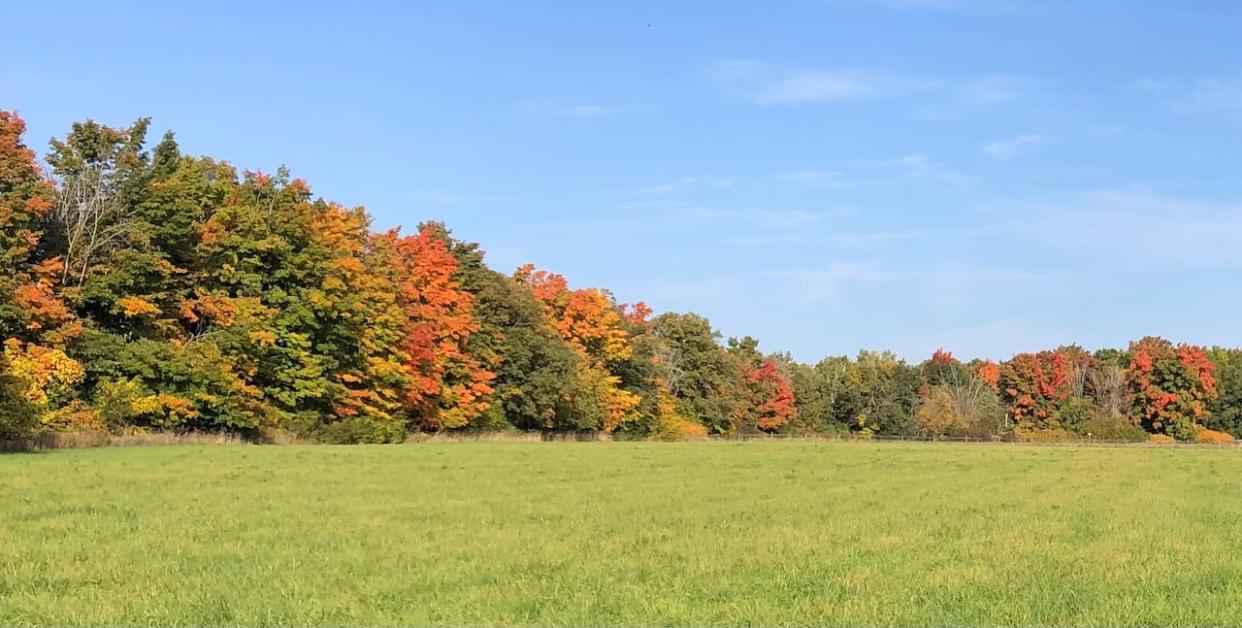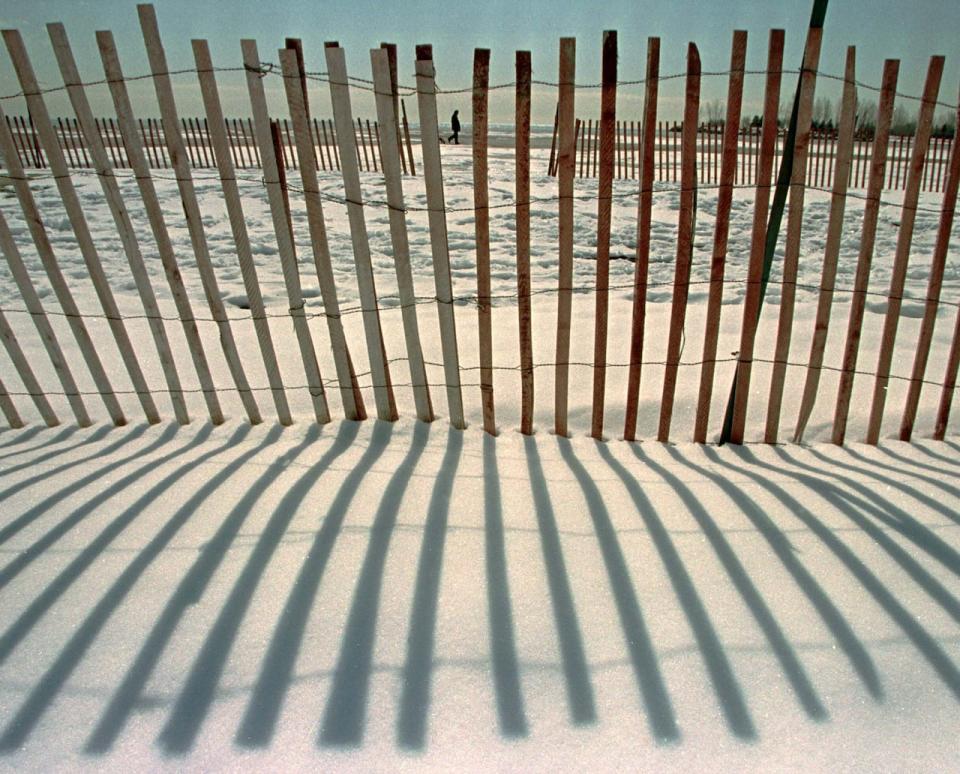They're called 'living snow fences' — and they could soon appear along rural Ottawa roads

Every year, the City of Ottawa puts up wooden snow fences to protect drivers from snowdrifts.
They're essential for wintertime rural road safety. No one wants a sudden gust coating their windshield with snow, and snow fences divert and minimize the wind.
But they also cost the city $8.14 per metre, plus maintenance costs, which adds up to millions of taxpayer dollars over the years.
Andrea Sissons and Pam Chiles had a more natural solution in mind, one that city council has now approved: installing living, breathing, self-maintaining forests on roadsides instead.
Sissons and Chiles are members of Rural Woodlands Ottawa, a volunteer group that strives to protect local forests.
Instead of the wooden slat fences, they suggested that the city develop "living snow fences" in rural Ottawa: rows of trees and shrubs that would do the exact same job.
Council has since unanimously approved a motion put forward by Rideau-Jock Coun. David Brown.
Now, the group is working with the city and the Rideau Valley Conservation Authority (RVCA) to convince farmers that they should get involved.

A wooden snow fence in Toronto casts long shadows in the bright sunshine. These kind of fences cost the City of Ottawa more than $8 per metre to install. (Reuters)
Why change?
One big reason to make the change is the annual savings in taxpayer dollars, according to Ian Cochrane, a forester for RVCA working on the pilot.
Every year, Cochrane said, the city sends out crews to put up snow fences and then again to tear them down. That involves a lot of costly labour and equipment, he said.
While a living snow fence would need tending for the first few years as the trees grew in, Cochrane said it could mostly manage itself.
Sissons said even though the city will pay landowners a subsidy for the land they use, that will still be cheaper for the municipality than using artificial fences.
According to Brown's motion, the initiative could also protect taxpayers' lives along with their wallets.
Without fences, the snow that piles up on the side of rural roads can blow into traffic, making driving hazardous. Brown's motion notes rural Ottawa represents 37 per cent of all fatal collisions in the city, and living snow fences are more effective at keeping snow away than artificial alternatives.
For the team at Rural Woodlands Ottawa, it's also a way to promote forested space in Ottawa.
"The mayor has his goal of [having] 250,000 trees planted a year," Sissons said. "He can't make that goal. There's nowhere to plant them."
Even if there was space, Sissons said it wouldn't be an adequate replacement for the old, diverse forests that have been destroyed.
According to Sissons, nearly 500 hectares of forest are ripped up in the Ottawa region each year. While living snow fences will just be a "drop in the bucket" when it comes to replacing those trees, "any tree planted in this city is important," Sissons said.

Rideau-Jock Coun. David Brown describes his motion as a 'win-win-win' for the environment, individual farmers and the citizens of Ottawa. (Jean Delisle/CBC)
Next step: convincing landowners
Cochrane said that one reason Ottawa hasn't used living snow fences before is that, unlike some other municipalities, the city needs the buy-in of private landowners.
Ottawa owns the roads, but doesn't own enough space on either side to plant five-metre-wide strips of trees and shrubs. Farmers need to agree to give up some of their land for the project.
But lost land means lost revenue from the crops they could have grown there. That's why there will be a subsidy — the amount of which is still undecided — to compensate them.
Cochrane thinks the subsidy will be enough to convince them, since there are other benefits to look forward to. He said trees provide nutrients for the soil, lead to better crop yields downwind, and prevent erosion.
According to Cochrane, some local landowners are already interested in the pilot. Sissons hopes that their success will eventually convince any holdouts.
"It's a hope that [the other farmers] come around," she said, and "that we collectively have a little bit of a mind change about the value of wild spaces and natural areas and the fact that we need them."
As for Brown, he told CBC Radio's Ottawa Morning that he sees this project as a "win-win-win" for the environment, the farmers, and the citizens of Ottawa.
"We already know who many of these farmers are, because we're working with them today. So I think it's going to be easy to leverage that network of contacts to get this going and actually see some benefits," the councillor said.
"We want to make sure that the program benefits the landowner and the taxpayer and the driver. And most of the time, that's the same person, three different ways."
Read the full motion


